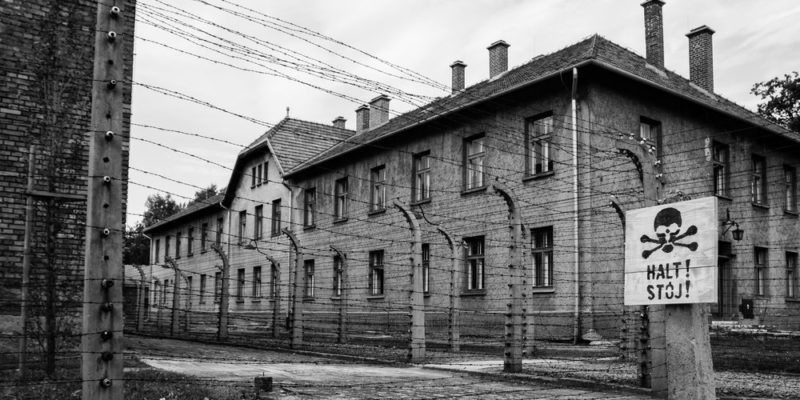We explain what National Socialism is, the origin of this political doctrine and its characteristics. Also, who was Adolf Hitler?
What is National Socialism?
National Socialism is a political, totalitarian and racist doctrine that was imposed by the hand of Adolf Hitler in Germany and that protected the absolute power of the State . Hitler ruled from 1933 to 1945 under a totalitarian regime , known as the Third Reich, in which individual rights and freedoms were suppressed and all opposition was persecuted.
The doctrine of National Socialism is also known as Nazism , which is the abbreviation of the German National Socialist Workers Party, created in 1920 and led by Hitler from 1921. Nazism was an ideology of the extreme right, anti-communist, anti-Semitic and anti-parliamentarian who considered the Aryan race as a "superior race" with respect to the populations of the other countries of Europe .
National Socialism took control of the German state and suppressed the trade unions and many private entities . As in the Italian fascism of Benito Mussolini, the existence of other political parties was not allowed . Through control of the media, the state tried to position Hitler, called the führer, as an omnipotent leader who was going to rescue Germany .
Who was Adolf Hitler?
Adolf Hitler was a German military and politician who led the National Socialist party , or Nazi party, from 1921 until his death in 1945. Hitler was part of the German army during World War I and began his political life under the banner of rejection of the Republic. of Weimar and the provisions of the Treaty of Versailles of 1919.
After several years as leader of the National Socialist party, Hitler assumed the power of German Chancellor in 1933 and was gaining executive and legislative powers that led him to form a type of anti-democratic and totalitarian government called the Third Reich.
During his 12 years in German power, Hitler sought to unite the Germanic peoples , which involved persecuting and exterminating all non-Aryan citizens . Imperialist ideas led Germany to start World War II in 1939 with the idea of annexing territories.
The persecution of all opposition extended during the Hitler government and went beyond the German borders. During the years that World War II lasted , torture camps were created to enslave and exterminate the races that the Nazis considered inferior.

Origin of National Socialism
In 1919, after the end of the First World War, Germany was devastated, its people suffered poverty and humiliation produced by the clauses of the Treaty of Versailles. The Weimar Republic was the political system that governed Germany since 1918 , which consisted of a democratic-type government that presented great political, economic and social instability.
The figure of Hitler in the political sphere arrived in 1919 , when he joined the German Workers' Party (DAP) and little by little he began to stand out for his public speaking skills, his promises of a great future for Germany and his racist and populist ideas. In 1920 the DAP was renamed the National Socialist German Workers' Party (NSDAP), also called the Nazi party, and Hitler began to be its leader.
In 1923 the army attempted a coup and Hitler was arrested and imprisoned. In those months of captivity he wrote "My Struggle", a book in which he made manifest his anti-Semitic and anti-communist ideas and his plans for Germany. After leaving prison, Hitler was silenced, so he could not make speeches , but he dedicated himself to structuring the Nazi party by creating organizations within it.
Over the years, Hitler was gaining allies among the ranks of the army and among a large number of German citizens hit by the war and by the economic crisis of 1929. After successive elections, the Nazi party was gaining power in Parliament and to 1932 already had a majority . In 1933 Adolf Hitler was appointed Chancellor by President Paul von Hindenburg and, after his death, Hitler assumed all the powers of the State and proclaimed himself leader of Germany.
In February 1933 a fire broke out in the Reichstag and the Nazis blamed the Communists. Faced with this situation, an emergency decree was drafted that gave Hitler special powers and the enabling law was promulgated that gave him all the powers of the parliament.
From there, many of the freedoms and rights of the German population began to be limited and eliminated, the Communist Party was banned and regional governments were left in the hands of Nazism . On the "night of the long knives", in June 1934, a massacre of political opponents took place that became one of the milestones that marked the development of the Nazi dictatorship .
Using as a banner resentment over the clauses of the Treaty of Versailles, the struggle against communism and the great economic depression, Hitler ruled the Third Reich until 1945.

Characteristics of National Socialism
Some of the main characteristics of German National Socialism were:
- Leader . Much of the German people were drawn to a charismatic leader, with a speech promising the recovery of German splendor. Hitler was known as "führer" and was shown as a leader with a mission to guide and unite the people.
- Nationalism . National Socialism was characterized by exacerbating and exalting the figure of Germany. His followers believed in the superiority of the German people over the communities and peoples of the rest of the nations.
- Totalitarianism . During the Third Reich, all political power was in the hands of a single leader, Hitler, who ruled over all areas of society . German National Socialism suppressed individual rights and freedoms, and private entities, political parties, and trade unions either remained in the hands of the state or were suppressed.
- Anti-communism . National Socialism fought against communism and persecuted all the people who professed that ideology.
- Anti-capitalism . National Socialism consolidated itself as a third position ideology (having neither communist nor capitalist ideas) that claimed the figure of the State as a guide.
- One-party system . During the government of German National Socialism, all political parties other than Nazism were banned. Citizens with another political ideology were persecuted and repressed.
- Use of propaganda . Propaganda was used, through the media and speeches, to exalt Hitler's figure as leader and impose Nazi ideas on the citizens.
- Censure . In the years in which Nazism was in power, all forms of expression and manifestation were prohibited and anyone who had ideas that did not agree with National Socialism was persecuted.
- Aryan race. Nazism borrowed from ancient Norse legends the idea that the Aryan race (which came from the Greeks, Romans, and Germans) was stronger, purer, and superior. This theory considered that the main mission of the State was to unify the Aryan peoples (who were scattered throughout Europe and mixed with other cultures ) with the aim of recovering the origins of purity of the race and consolidating a new superior race by exterminating the rest.
- Imperialism . National Socialism sought to group all Germanic peoples in a single territory. Thus, he invaded other nations and persecuted all those who were not considered to be of the Aryan race.
- Racism . The idea of a superior Germanic race served as the basis and justification for suppressing all those races that were not considered pure. In this way the Nazi regime justified mass killings and persecutions, especially towards Jews, Communists and Gypsies.
- Use of force . The military forces were used to intimidate the population and repress and persecute all citizens who did not align themselves with the ideas of National Socialism.
- State education . We used to education and the various organizations within Nazism to convey the ideas of National Socialism to all groups of the German population.
National Socialism in World War II

After the First World War, a great resentment remained among the population and the German spheres of power for the provisions of the Treaty of Versailles , a treaty that ended the First World War and made Germany responsible for the war with clauses that included payment of debts and removal of territories.
The economic hardship derived from the conditions of the Treaty of Versailles, added to the economic depression of 1929, generated great unrest among the German people. Faced with this situation and the weakening of the Weimar Republic, Hitler-led National Socialism emerged, with promises to recover territories and restore splendor to Germany. Imperialism was one of the main engines that drove German expansionism , with the excuse of unifying "the Germanic peoples."
In 1935, without taking into account the clauses of the Treaty of Versailles, Germany began to rearm militarily , to annex territories and on September 1, 1939 invaded Poland. This invasion started World War II and marked the beginning of German expansion, which then continued in countries such as Denmark, Norway, and France.
After six years of successive battles, the United States, Great Britain, and the Soviet Union faced German expansionism, and German troops began to surrender between April and May 1945 . National Socialism began its fall after Hitler's suicide on April 30, 1945, and the subsequent surrender of German troops between May 7 and 9, 1945.
The above content published at Collaborative Research Group is for informational and educational purposes only and has been developed by referring reliable sources and recommendations from technology experts. We do not have any contact with official entities nor do we intend to replace the information that they emit.
MA student of the TransAtlantic Masters program at UNC-Chapel Hill. Political Science with a focus on European Studies. Expressed ideas are open to revision. He not only covers Technical articles but also has skills in the fields of SEO, graphics, web development and coding. .
Leave a reply
Your email address will not be published. Required fields are marked *Recent post

Sport: What Is It, Types, Risks, Features, Characteristics and Examples

Dogs: Emergence, Features, Characteristics, Feeding and Breeds

Story: Definition, Elements, Structure, Features and Characteristics

